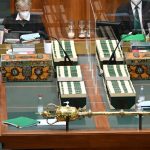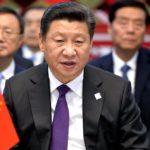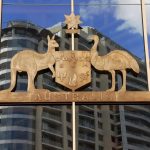Facing up to our past
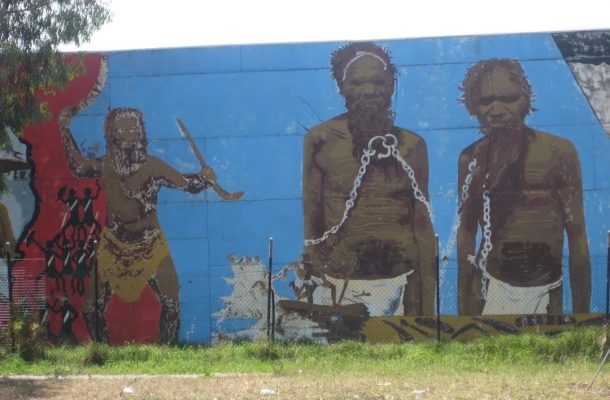
The full story about Australia’s transfer from tribal nations to the Crown is rarely acknowledged, whether from fear of blame for the past, or the cost of compensation, or simply ignorance of the indisputable facts. But the legacy of this history rebounds around the country every day, limiting lives and challenging claims that we’re a caring and sharing nation; “All In This Together”.
Australia’s past includes the armed conflict and post-conflict stratagem. Unusually for the 18th and 19th centuries, this continental scale land transfer was achieved without compensation or negotiation with the owners.
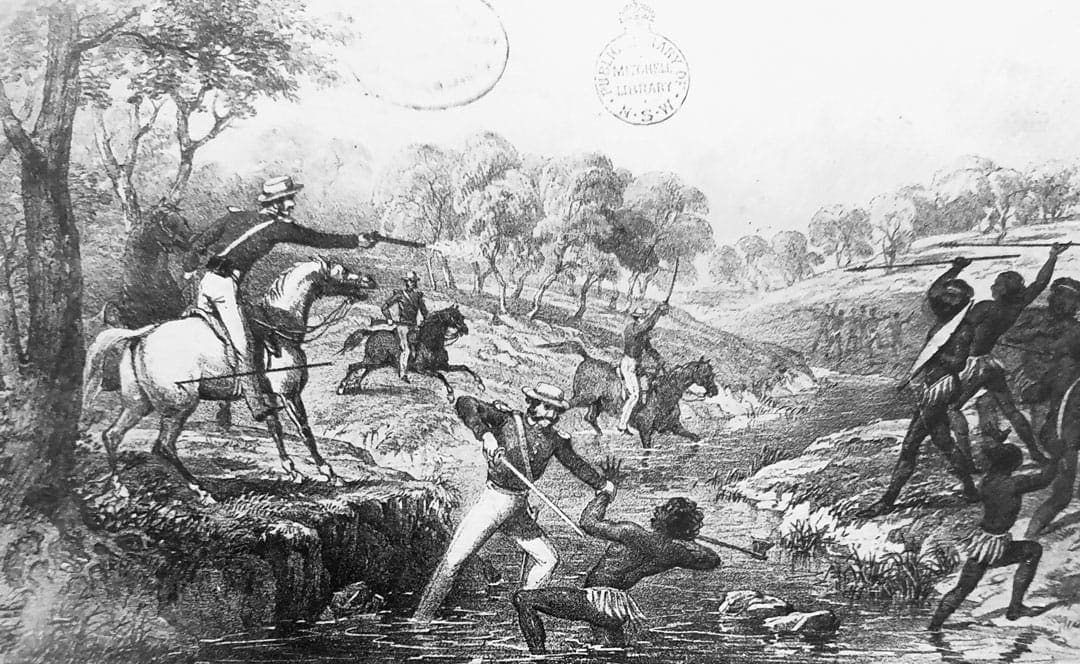
Justification for the action, and its impacts, was strengthened by the new science developed by a giant of the age, English naturalist Charles Darwin. The science was backed by biblical tenets. The Darwinian theory simplified down to the survival of the fittest was given expression in the parliamentary debates on the question of the Aborigines for generations.
Misinterpreted Darwinian precepts emboldened some fascist adherents in the early 20th century who embraced notions of racial purity and eugenics, ultimately sending millions to asylums or extermination camps elsewhere.
In Australia, an interpretation of Darwin’s theory of evolution meant the vanquished could comfortably be classified as belonging to the orders of the less evolved or barely human. After all, they had not “developed” the land, they had no recognisable religion, or visible trappings of government. How could such culturally (and morally) impoverished wanderers have enjoyed a sovereign existence?
Evidence of the “decline” of darker races proved the dogma: there was the rapid “extinction” of the Tasmanians, and the soaring death rates among the internally displaced peoples, starving, diseased, even when provisioned with a blanket and confined on tribal enemy territory.
Asked in an 1899 Inquiry why missionaries were failing to convert Aborigines, F.J. Gillen replied: “First of all, the Australian aborigines are the lowest in the scale of the barbarian races, as well as the lowest in human intelligence. Beyond that I cannot account for it.”
When A. Sutherland M.A. wrote a history of Victoria in 1888, he reflected: “… it must be a divine law that they (Anglo-Saxons) are to migrate and form for themselves new homes in waste lands … ”
Evolution as justification
Assigning the previous owners to the bottom of the divinely sanctioned evolutionary scale helped justify land transfer, 150 years of massacres, the law enforcement scams, the policies that took the children, the slavery and indenturing.
The frontier wars were fought without formal declaration. Early settlers begged for military aid. But given their enemies were deemed British subjects, Aboriginal crop burning, livestock and/or keeper killing and retaliations were criminal matters for the police, not acts of war or invasion resistance. Captured fighters were jailed or hanged for theft or murder, not held as prisoners of war.
Unpaid native police forces were effective guerrilla fighters, especially in Queensland, attacking tribal enemy camps at dawn. Western Australian pastoralists were particularly angry about their government’s failure to send armed aid.
By 1900, however, pastoral protection was provided by the WA police, incentivised by a generous daily allowance paid for each alleged cattle killer or witness they could capture and walk in chains to a far-off court house. Sentenced tribal men then served their time building public works for the state. Chained tribal women witnesses were systematically raped.
Volumes of parliamentary papers describe the numbers, location, regulation and stratagem involved in the economic exploitation and abuse of the vanquished tribes. Their slavery or underpaid work established the early pastoral, pearling, fishing, sugar, and domestic sectors.
Indigenous prisoners replaced convict labour when transportation ceased. Indentured workers and children from six years up could be officially designated unskilled, slow or stupid, unable to be trained and their supply not sustainable. This justified no pay, unequal pay, or treatment not allowed in the mainstream. In NSW and Queensland, official confiscation of wages of some Aboriginals persisted into the 1970s.
Mixed-race children were to be saved by removal from the mother, then trained to be workers, and married off to lighter “castes”.
By the 20th century, an unanticipated “problem” had emerged. The “full bloods” were “dying out”, but numbers of mixed-race Aboriginal children were rapidly increasing. Concerned policymakers considered the “quadroons, octoroons and half castes” deserved different treatment under the law, given their white-man blend.
They also had, potentially, a higher worker value, although a 1913 South Australian royal commission considered: “…‘half-castes’ have not the heredity that other races have, and you cannot expect them to work on purely industrial lines…”
A new strategy was soon adopted in all states. Mixed-race children were to be saved by removal from the mother, then trained to be workers, and married off to lighter “castes”.
The 1913 royal commission also reported on the ideal age to remove the child. “When they are caught young, they are far less inclined to revert to their old state. …I think when they are 2 or 3 years of age….” .
The legacies of the Stolen Generations
In 1939, a Commonwealth estimates debate reflected on the lives of workers confined by night in a curfewed government compound: “It is well known that many of the half-castes and aborigines in the compound suffer venereal disease. Some of them are in a bad state.
The only mark that distinguishes the diseased persons from others in the compound is the red trimmings on their clothes. (They) should be accommodated many miles away from Darwin and not close to the centre of town.”
In 1938, Victorian Aboriginal activist William Cooper lodged a formal protest with the German Consulate condemning the treatment of Jews in Nazi Germany. A human rights defender all his life, he was expelled from the Cummeragunja settlement as a trouble-maker.
Neither my schools, nor universities, taught me the history of the Aboriginal fighters for freedom of association, citizenship, equal wages, land rights, or their children.
Besides the harsh reality, Australia’s documentary history also records the physical and cultural survival of the Indigenous people. In parallel with the racism, exploitation and injustice, there are also records of the partnering, kindness, generosity and sacrifices of human rights defenders, both black and white, from across the continent.
Generations have believed the first owners only “occupied” the continent before expiring from diseases, a consequence of weakness and inveterate living.
At this time we need to accept that a powerful healing influence can be launched when a society knows and acknowledges all the episodes of its history.
We should not imagine that observing “protocols” is sufficient. We must also teach the children raising the flags and smelling the smoke the truth about how, why, and when the continent changed hands.
The how includes the co-option of science and religion, the official cruelties, the private and public exploitation, the culpabilities, and the triumphs. Then as a nation we can develop beyond the legacies of usurpation to a fairer, kinder place.
This article was published by Lens.







